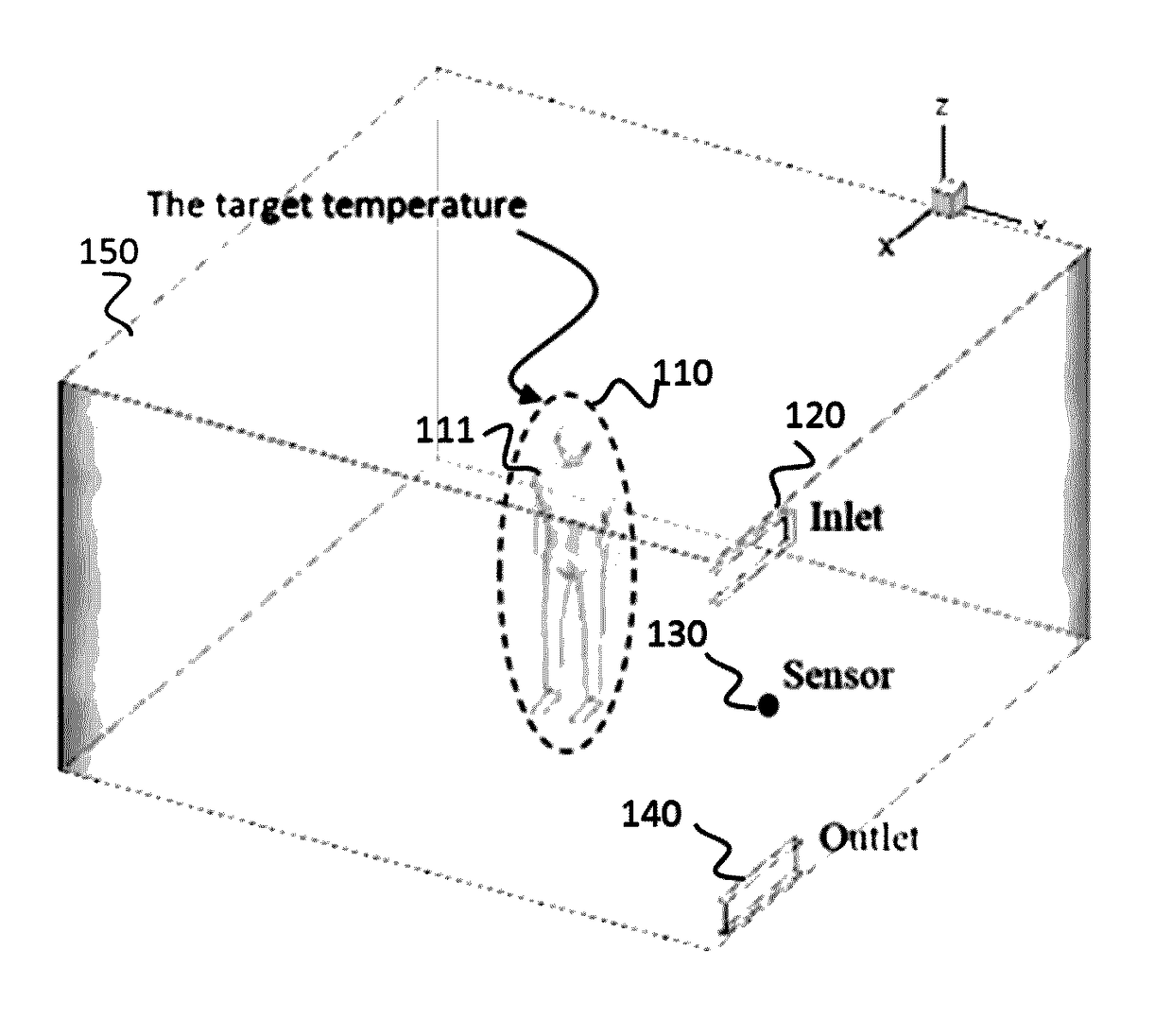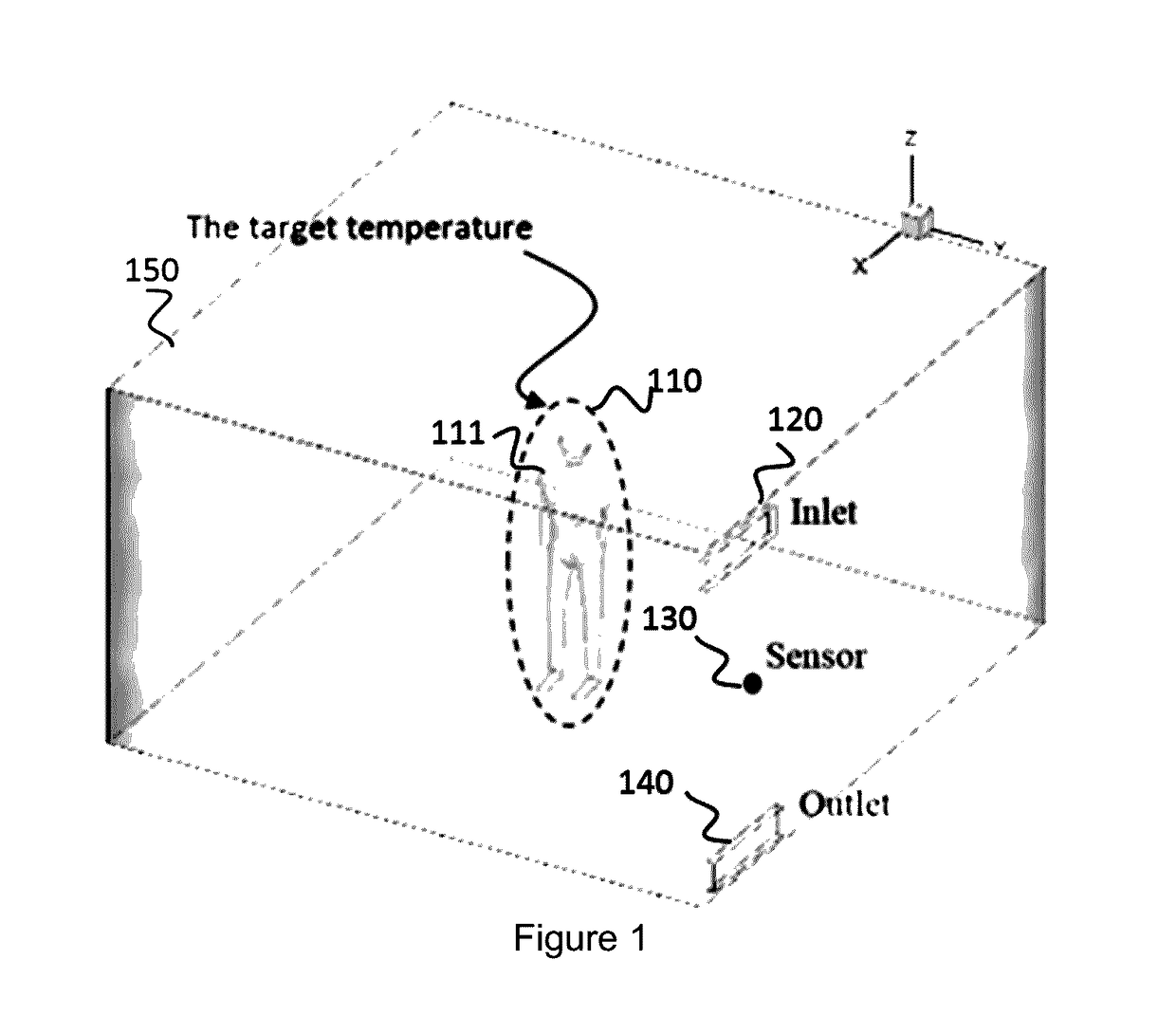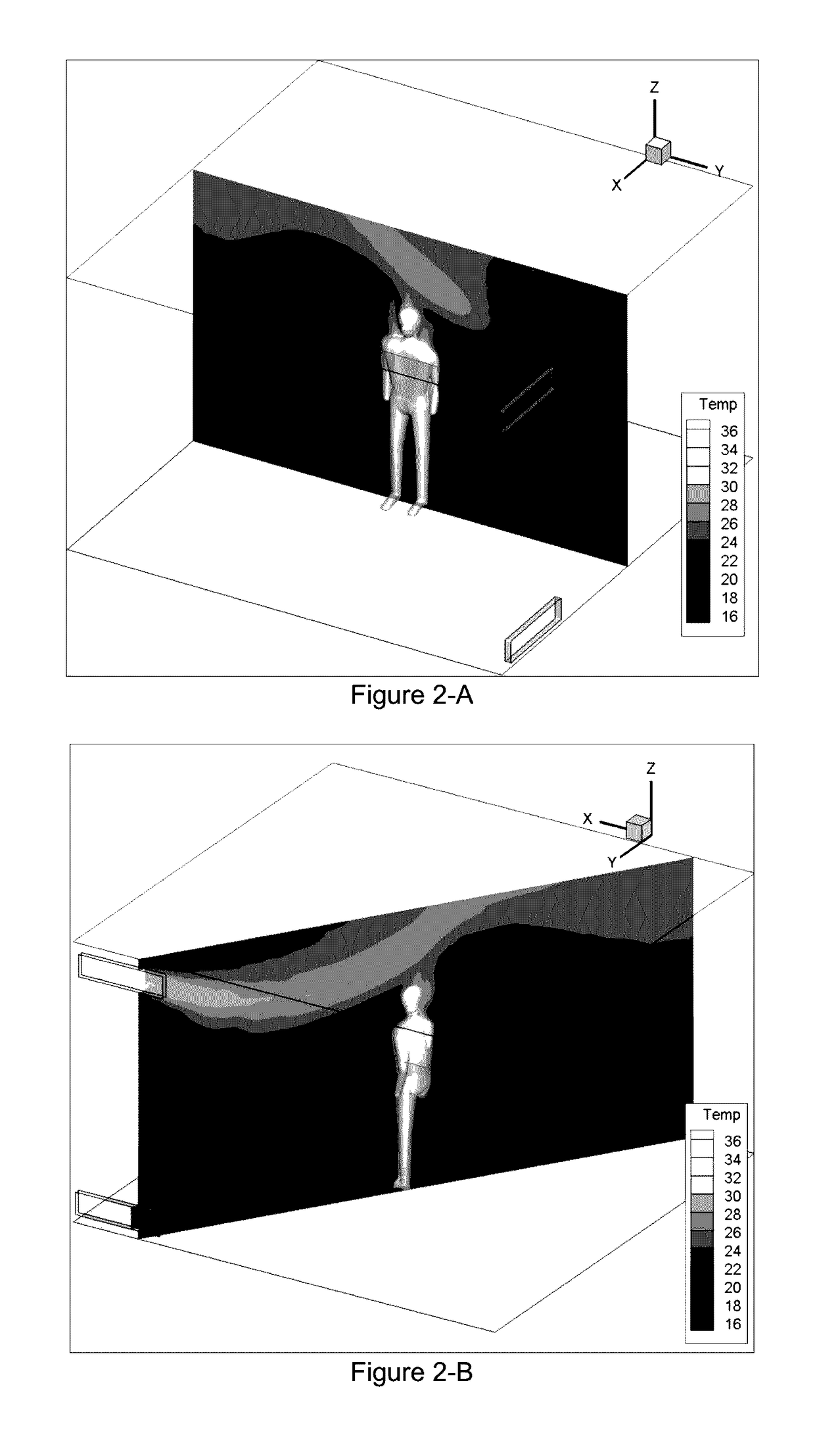Virtual thermostat for a zonal temperature control
- Summary
- Abstract
- Description
- Claims
- Application Information
AI Technical Summary
Benefits of technology
Problems solved by technology
Method used
Image
Examples
Example
DETAILED DESCRIPTION OF THE DRAWINGS
[0037]The present system is a virtual thermostat, which can control the temperature at a target zone or location in an HVAC controlled space. This system operates based on a theoretical calculation of the temperature inside the space using a computational fluid dynamic (CFD) software.
[0038]The present virtual thermostat is designed to control the temperature of a specific target zone in an HVAC controlled space, in which the HVAC system has an inlet duct and an outlet duct. The system comprises of the followings:[0039]a. A 3D scanner to scan and generate a 3D point cloud raw data of a controlled space boundary. The prior art provides such devices, such a Kinect system by Microsoft corp. In order to capture the whole geometry of the controlled space, the 3D scanner is installed on a pan tilt platform, which has two servo motors, one of them to rotate the 3D scanner 180° degrees and the other one to tilt it up and down.[0040]b. A graphics-applicatio...
PUM
 Login to View More
Login to View More Abstract
Description
Claims
Application Information
 Login to View More
Login to View More - R&D
- Intellectual Property
- Life Sciences
- Materials
- Tech Scout
- Unparalleled Data Quality
- Higher Quality Content
- 60% Fewer Hallucinations
Browse by: Latest US Patents, China's latest patents, Technical Efficacy Thesaurus, Application Domain, Technology Topic, Popular Technical Reports.
© 2025 PatSnap. All rights reserved.Legal|Privacy policy|Modern Slavery Act Transparency Statement|Sitemap|About US| Contact US: help@patsnap.com



